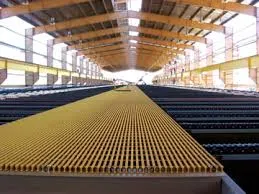
-
 Afrikaans
Afrikaans -
 Albanian
Albanian -
 Amharic
Amharic -
 Arabic
Arabic -
 Armenian
Armenian -
 Azerbaijani
Azerbaijani -
 Basque
Basque -
 Belarusian
Belarusian -
 Bengali
Bengali -
 Bosnian
Bosnian -
 Bulgarian
Bulgarian -
 Catalan
Catalan -
 Cebuano
Cebuano -
 China
China -
 China (Taiwan)
China (Taiwan) -
 Corsican
Corsican -
 Croatian
Croatian -
 Czech
Czech -
 Danish
Danish -
 Dutch
Dutch -
 English
English -
 Esperanto
Esperanto -
 Estonian
Estonian -
 Finnish
Finnish -
 French
French -
 Frisian
Frisian -
 Galician
Galician -
 Georgian
Georgian -
 German
German -
 Greek
Greek -
 Gujarati
Gujarati -
 Haitian Creole
Haitian Creole -
 hausa
hausa -
 hawaiian
hawaiian -
 Hebrew
Hebrew -
 Hindi
Hindi -
 Miao
Miao -
 Hungarian
Hungarian -
 Icelandic
Icelandic -
 igbo
igbo -
 Indonesian
Indonesian -
 irish
irish -
 Italian
Italian -
 Japanese
Japanese -
 Javanese
Javanese -
 Kannada
Kannada -
 kazakh
kazakh -
 Khmer
Khmer -
 Rwandese
Rwandese -
 Korean
Korean -
 Kurdish
Kurdish -
 Kyrgyz
Kyrgyz -
 Lao
Lao -
 Latin
Latin -
 Latvian
Latvian -
 Lithuanian
Lithuanian -
 Luxembourgish
Luxembourgish -
 Macedonian
Macedonian -
 Malgashi
Malgashi -
 Malay
Malay -
 Malayalam
Malayalam -
 Maltese
Maltese -
 Maori
Maori -
 Marathi
Marathi -
 Mongolian
Mongolian -
 Myanmar
Myanmar -
 Nepali
Nepali -
 Norwegian
Norwegian -
 Norwegian
Norwegian -
 Occitan
Occitan -
 Pashto
Pashto -
 Persian
Persian -
 Polish
Polish -
 Portuguese
Portuguese -
 Punjabi
Punjabi -
 Romanian
Romanian -
 Russian
Russian -
 Samoan
Samoan -
 Scottish Gaelic
Scottish Gaelic -
 Serbian
Serbian -
 Sesotho
Sesotho -
 Shona
Shona -
 Sindhi
Sindhi -
 Sinhala
Sinhala -
 Slovak
Slovak -
 Slovenian
Slovenian -
 Somali
Somali -
 Spanish
Spanish -
 Sundanese
Sundanese -
 Swahili
Swahili -
 Swedish
Swedish -
 Tagalog
Tagalog -
 Tajik
Tajik -
 Tamil
Tamil -
 Tatar
Tatar -
 Telugu
Telugu -
 Thai
Thai -
 Turkish
Turkish -
 Turkmen
Turkmen -
 Ukrainian
Ukrainian -
 Urdu
Urdu -
 Uighur
Uighur -
 Uzbek
Uzbek -
 Vietnamese
Vietnamese -
 Welsh
Welsh -
 Bantu
Bantu -
 Yiddish
Yiddish -
 Yoruba
Yoruba -
 Zulu
Zulu
Jan . 09, 2025 11:24
Back to list
frp pipe
FRP pipes, or fiberglass reinforced plastic pipes, offer an exceptional solution for a variety of engineering and infrastructure challenges. With a unique combination of strength, corrosion resistance, and lightweight construction, FRP pipes are increasingly becoming the go-to choice for industries around the world. Having spent over two decades in the field of material engineering and infrastructure development, my experiences underscore the evolving nature of FRP applications and its unmatched benefits.
Authoritativeness in discussing FRP pipes is solidified by illustrating real-world success stories and documented case studies. In a recent infrastructure project involving seawater desalination, the use of FRP pipes proved invaluable. Their corrosion resistance increased the system’s longevity and reduced maintenance, as the harsh marine environment would have quickly degraded metal counterparts. This project not only met cost efficiency goals but also advanced the infrastructure’s overall sustainability profile. Such instances highlight the authoritative role FRP pipes play across industries where traditional materials might falter. Businesses and stakeholders seek trust in the materials they choose for long-term investments. FRP pipes offer that security, backed by rigorous testing and endorsements from engineering standards organizations worldwide. Their predictable performance under load, along with compliance to international standards such as ASTM and ISO, reinforce their reliability. My continuous participation in industry seminars and standards committees enables me to affirm that the due diligence performed on these materials meets even the most stringent requirements, fostering trust among engineers and investors alike. In conclusion, FRP pipes are not merely an innovative solution; they represent a shift towards more sustainable, cost-effective, and highly resilient infrastructure systems. The expertise in developing, implementing, and refining these systems elevates them beyond temporary alternatives, marking them as a pivotal component in modern engineering. Engaging with FRP pipe solutions through studies and professional collaboration has consistently highlighted their unparalleled benefit potential, marking them as a crucial asset in any infrastructure toolkit. With their credibility firmly established across various applications, FRP pipes continue to lead the future of efficient infrastructure development.


Authoritativeness in discussing FRP pipes is solidified by illustrating real-world success stories and documented case studies. In a recent infrastructure project involving seawater desalination, the use of FRP pipes proved invaluable. Their corrosion resistance increased the system’s longevity and reduced maintenance, as the harsh marine environment would have quickly degraded metal counterparts. This project not only met cost efficiency goals but also advanced the infrastructure’s overall sustainability profile. Such instances highlight the authoritative role FRP pipes play across industries where traditional materials might falter. Businesses and stakeholders seek trust in the materials they choose for long-term investments. FRP pipes offer that security, backed by rigorous testing and endorsements from engineering standards organizations worldwide. Their predictable performance under load, along with compliance to international standards such as ASTM and ISO, reinforce their reliability. My continuous participation in industry seminars and standards committees enables me to affirm that the due diligence performed on these materials meets even the most stringent requirements, fostering trust among engineers and investors alike. In conclusion, FRP pipes are not merely an innovative solution; they represent a shift towards more sustainable, cost-effective, and highly resilient infrastructure systems. The expertise in developing, implementing, and refining these systems elevates them beyond temporary alternatives, marking them as a pivotal component in modern engineering. Engaging with FRP pipe solutions through studies and professional collaboration has consistently highlighted their unparalleled benefit potential, marking them as a crucial asset in any infrastructure toolkit. With their credibility firmly established across various applications, FRP pipes continue to lead the future of efficient infrastructure development.
Next:
Related Products









